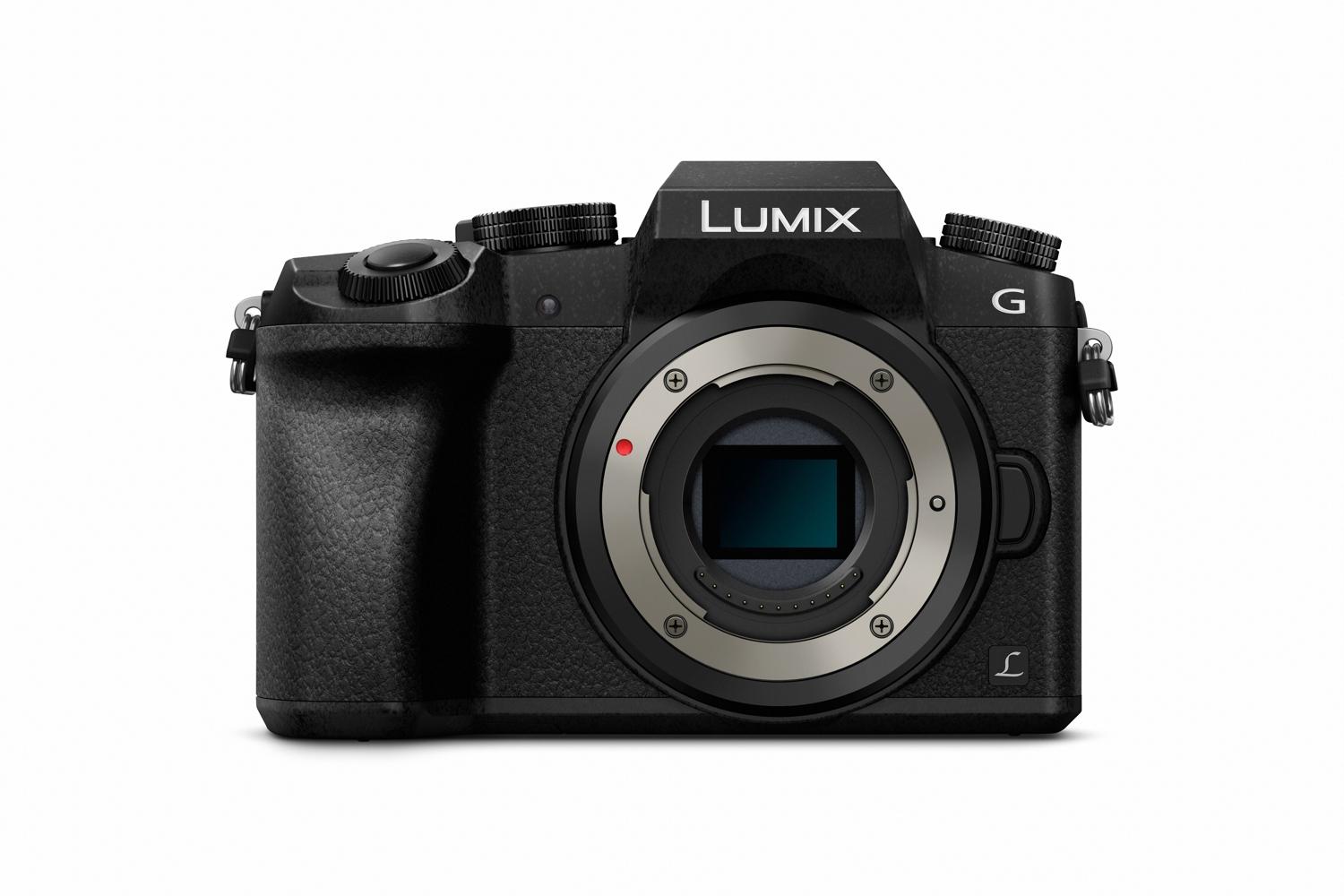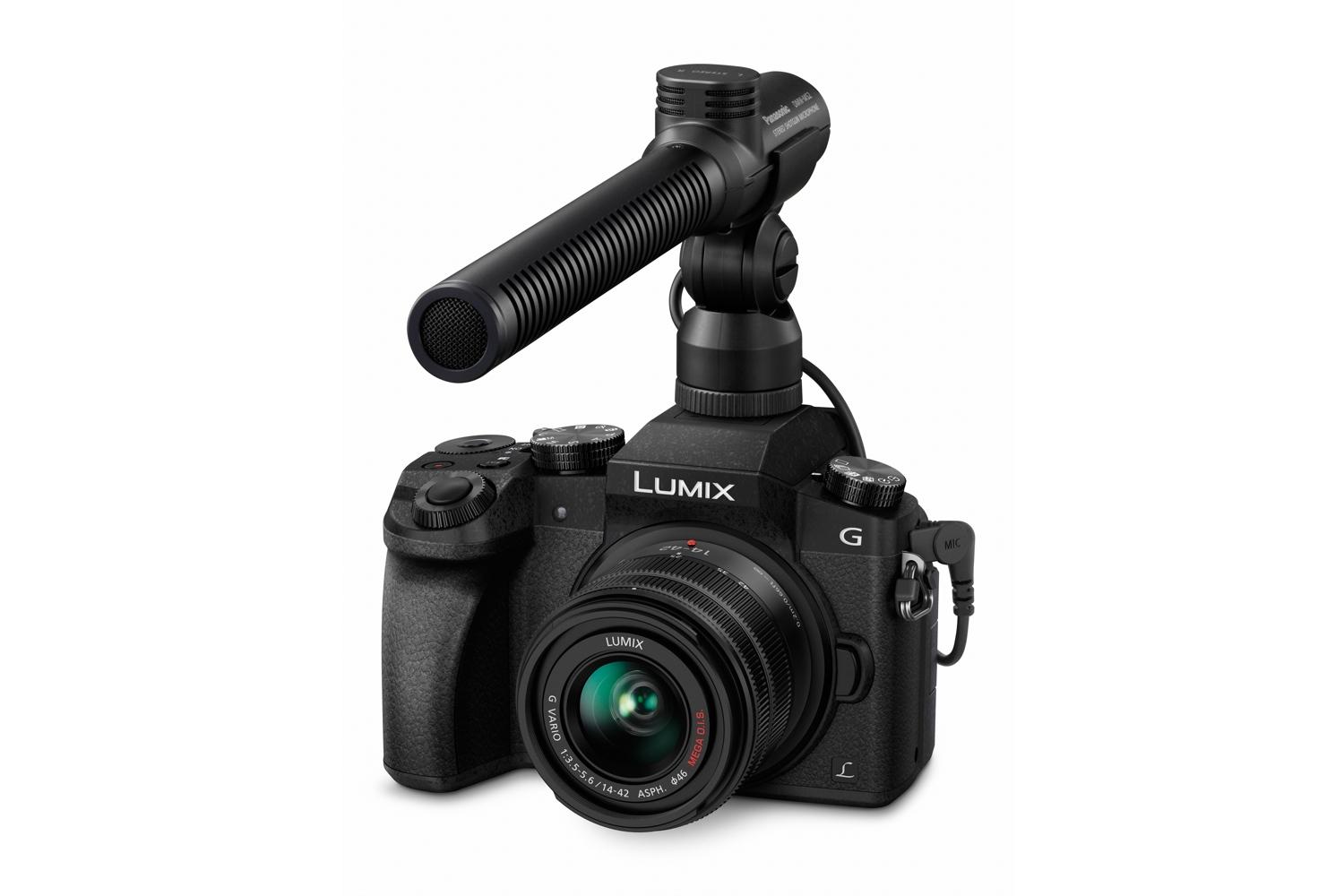“Never miss a moment” has been a familiar marketing tagline for cameras since forever, but Panasonic’s 4K-capable cameras might be some of the first to deliver on that. By recording ultra-high-definition video, the idea is that, so long as you’re recording, you’ll never miss that moment, since you’ll be able to create high-res photos from the video afterward.
The firm’s latest 4K camera is the Lumix DMC-G7. A successor to the two-year-old G6, the G7 is a brand-new camera that packs in the newest Panasonic tech.
The mirrorless Micro Four Thirds camera is compatible with 24 interchangeable lenses. Like many of Panasonic’s latest models, the big upgrade in the G7 from its predecessor is the ability to shoot 4K video (QFHD, 3,840 x 2,160 at 30p or 24p). And if consumers aren’t ready for
In the G7, Panasonic is introducing three new 4K Photo modes:
With 4K Pre-burst, the camera shoots 60 images from both before (yes, before — it begins recording when the camera registers a half-press of the shutter button) and after you press the button, helping you capture the moment in case you aren’t quick enough. And to give users quick access to these

As for video recording, the G7 has an “endless” 4K recording time, letting you keep recording until you run out of memory or the battery dies; normally with
The G7 uses Panasonic’s newly developed 16-megapixel sensor and the latest Venus Engine image processor, borrowed from the GF7 and GH7 cameras, respectively. These components allow the camera to shoot in high-resolution, with less noise, Panasonic says, and improve image quality over its predecessor. The Venus Engine also helps to improve image quality when shooting with a small iris (aperture) opening.
“The Venus Engine image processor with quad-core CPU enables high speed signal processing. The advanced Multi-process NR (Noise Reduction) applies effective noise reduction and detail processing according to each component frequency. Plus, newly added Random Filter reduces chromatic noise in the image even more naturally. As a result, ISO 25,600 is achievable. The Venus Engine also improves accurate reproduction of each color not only in color phase but also in saturation and luminosity. In addition, the Venus Engine in LUMIX G7 excels in diffraction compensation making the resulting image crisp and clear even when shot at a small aperture.”
The G7 is designed to be an entry-level DSLR alternative, with performance and features to match or surpass DSLR. Panasonic’s contrast autofocus system has been greatly improved in speed (as fast as 0.07 seconds) and accuracy versus earlier systems. Incorporated Depth of Defocus technology (introduced in the GH4) helps to shorten focusing time by calculating “the distance to the subject by evaluating two images with different sharpness levels while consulting the data of optical characteristics of the current lens at that moment.” Burst mode is also improved, at 8 fps (single autofocus point) or 6 fps (continuous autofocus).
Another new feature is Starlight AF. By calculating the contrast value of each AF zone, the G7 can shoot the night sky with autofocus. Panasonic says the camera can shoot in low light, down to -4EV, which is equivalent to moonlight. Other autofocus features include Face/Eye Detection AF that focuses on the eye; Pinpoint AF for magnifying an area for precise focus; and a new AF Tracking algorithm that recognizes the color, size, and motion vector of a moving object.
Other notable specs include a max 1/16,000th of a second shutter speed; easier Wi-Fi pairing by removing the need to enter a password; wider panorama image capture (sacrificing image height for more width); OLED electronic viewfinder (EVF) with 2,360K-dot resolution, plus the ability to use the touch-panel on the LCD while using the EVF; 3-inch, flip-out, free-angle LCD with 1,040K-dot resolution; and DSLR-like ergonomics.
The G7 competes with mirrorless models like the Olympus OM-D E-M10 and Sony Alpha A6000. Panasonic describes the target user as someone in his/her 30s and 40s, who’s stepping up to a camera for shooting mainly memorable scenes with family and friends. For the U.S. market, Panasonic will sell the G7 in two kits, one with a 14-42mm kit lens for $800 (available in black or gunmetal), and one with a 14-140mm kit lens for $1,100 (black only). Because Panasonic is targeting new customers with the G7, no body-only option will be available at launch.

Editors' Recommendations
- Canon EOS R5 vs. Sony A7S III vs. Panasonic S1H: Best full-frame for video?
- Panasonic takes on Sony in the vlogging camera game with compact Lumix G100
- In the zoom-versus-speed debate, Panasonic’s 10-25mm f/1.7 gives you both









